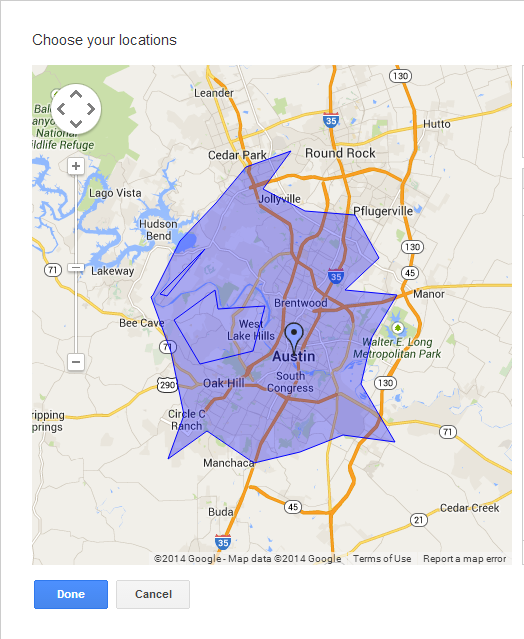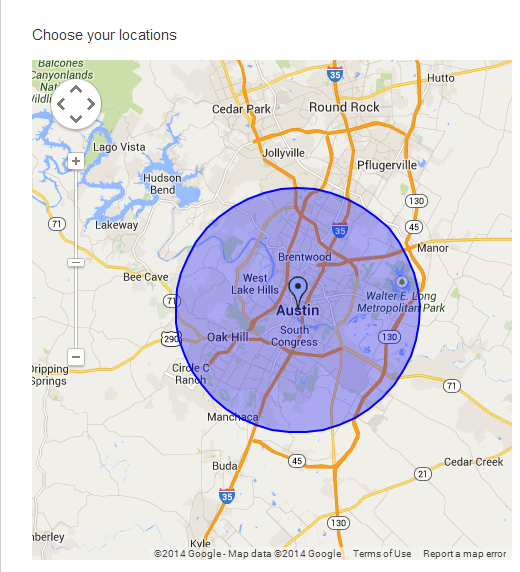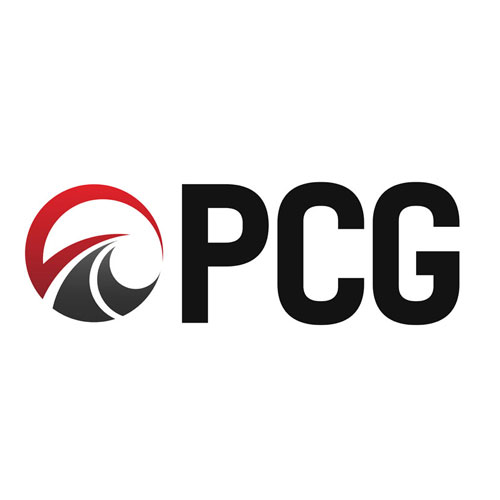My last blog post explained why geotargeting was important (hint: it can save you money!) and now it’s time to dig in and see how you can use geotargeted campaigns for your dealership’s marketing.
The most basic type of geotargeting is to choose a specific city or town that you want to show up in. This is definitely a good starting point, but very often the actual city boundaries as shown on the map don’t reflect the reality of where your potential customers may be. A more accurate method is to set a radius target around your location, as most businesses have a good idea of how far people are willing to travel to them. For a business that travels to their customers, this definitely makes sense since they know how far their service area is. You can even use a combination of city and radius targeting if that resulting map provides the best picture of the area you want to target.
As you can see, the irregular shape doesn’t provide an even reach in all directions.
In most cases it makes sense to target evenly in all directions.
Building on this concept, a business may find that 80% of their customers are coming from within 10 miles, but another 20% may come from as far as 25 miles. In this case, the advertiser may want to take advantage of the additional opportunity of potential customers between 10 – 25 miles, but they also don’t want to spend too much on this since it’s less likely to lead to sales.
A good strategy here is to create 2 concentric radius targets – one 20 mile and another 50. For the 50 mile target they can reduce the CPC bid, which will compensate the lower conversion rate that’s expected. This is also a good way for a business to experiment with extending their reach to a new market without having to spend too much on this.
The same concept would apply if a business is currently targeting one city, but wants to try expanding into another one. In this case, it may even be worth increasing the bid if they really hope achieve traction there – for example, if they plan to eventually open a new store in that location.
The main focus is on the 10 mile radius, but there are also opportunities as far as 25 miles that shouldn’t be overlooked.
Geotargeting offers many options to ensure that advertisers are able to reach the right audience and get the maximum return on their Adwords spend. In order to maximize the potential of geotargeting, an advertiser needs to know where they should focusing their efforts, as well as which areas to avoid.




